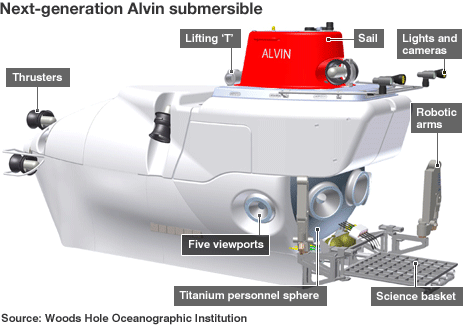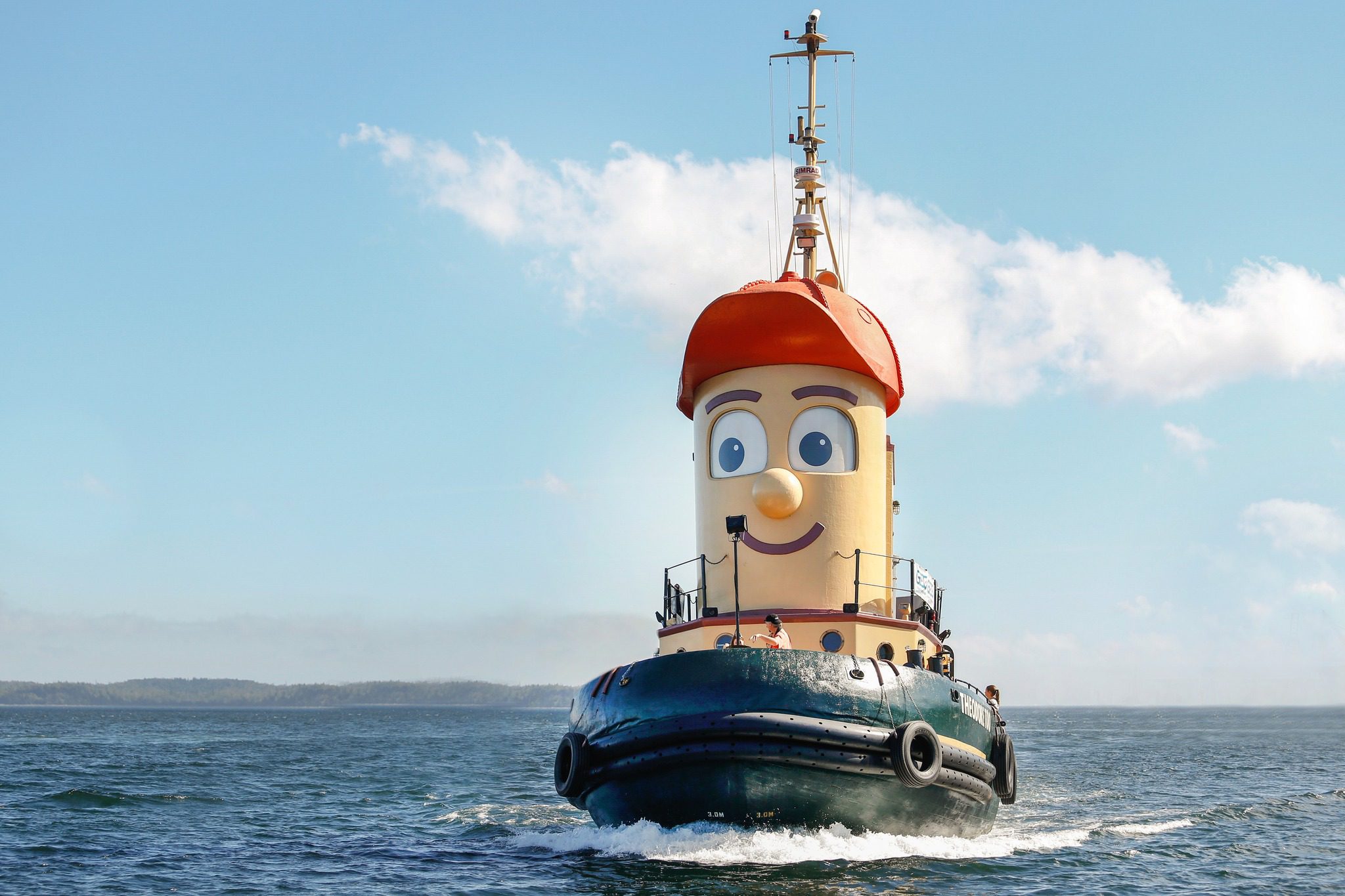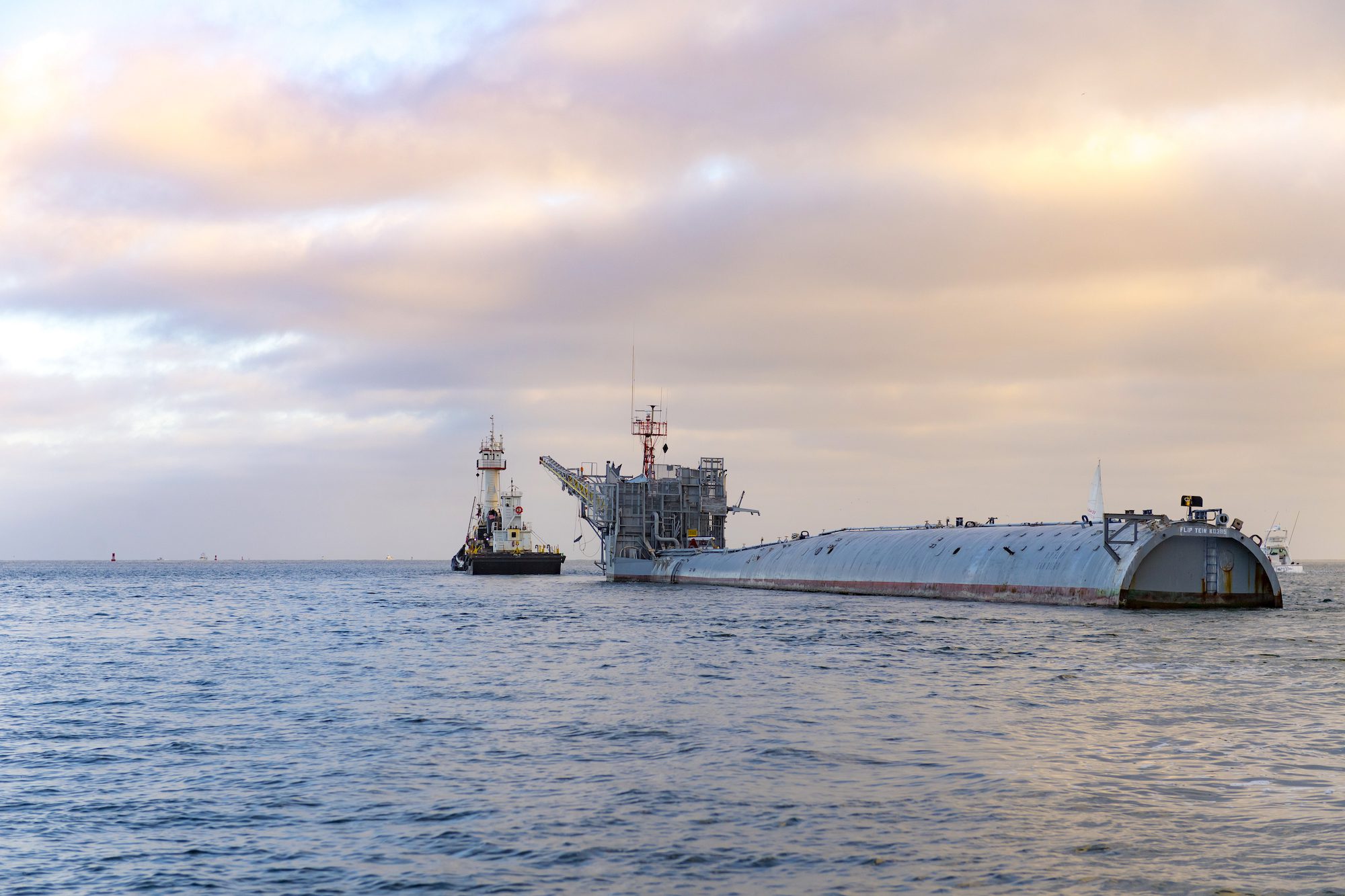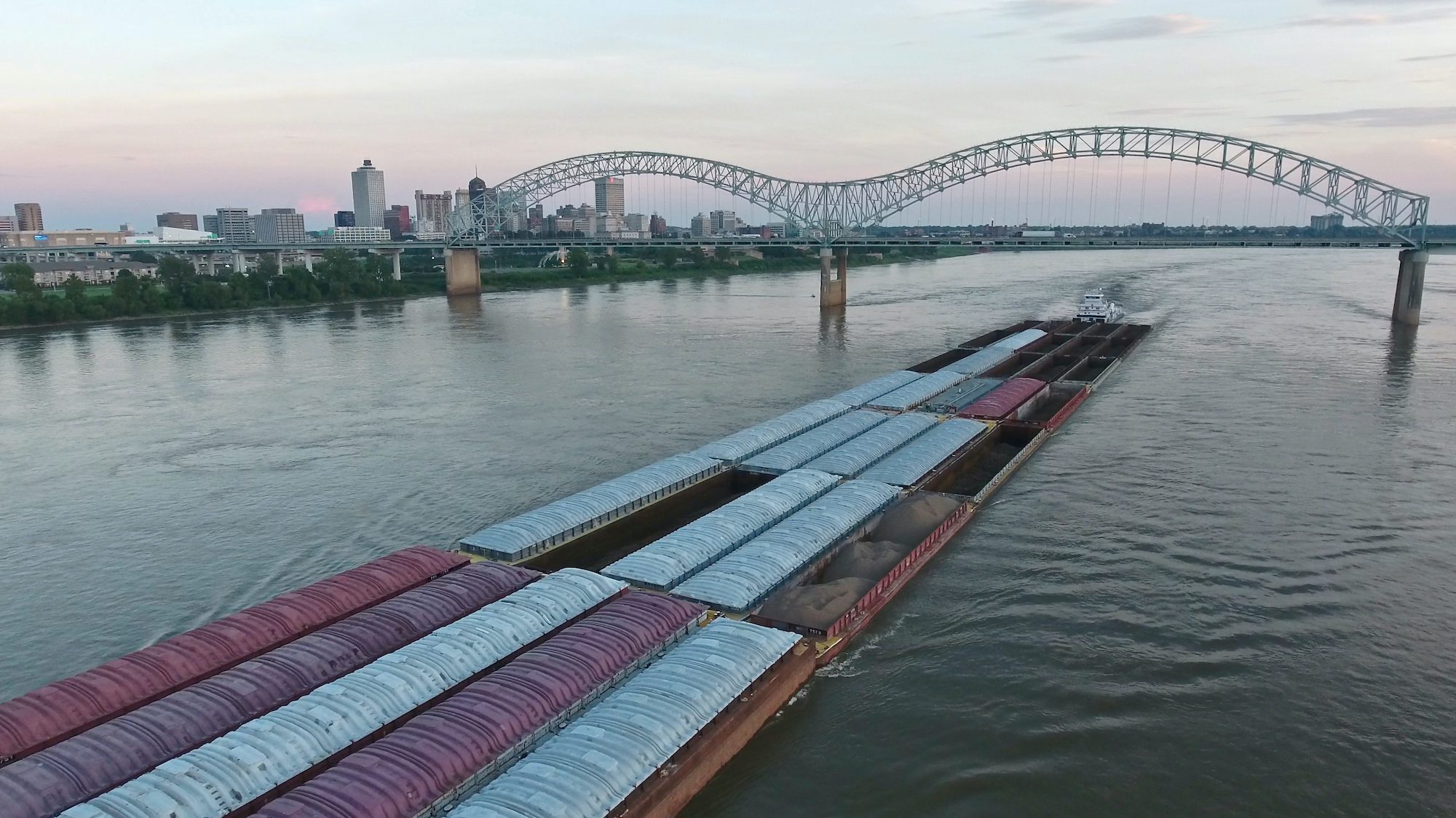
Alvin, the manned submersible perhaps most famous for such exploits as locating a lost H-bomb in the Mediterranean Sea in 1966, exploring the first known hydrothermal vent sites in the 1970s, and of course surveying the wreck of RMS Titanic in 1986, is to be withdrawn from service this week to undergo a two-phase, $40m renovation – the biggest retrofit of its 40+ year career.
“The deep-ocean and seafloor beyond 4,500 meters water depth is this planet’s last frontier. A critical asset in this exploration is a more capable human occupied vehicle,” said Dr. Susan Humphris, the principal investigator on the upgrade project and a geologist with Woods Hole Oceanographic Institution (WHOI), which operates Alvin for the U.S. oceanographic community. “Those capabilities will be achieved through a two-stage upgrade of the current Alvin that will ultimately allow the sub to stay down longer – up to 12 hours – and dive to 6,500 rather than 4,500 meters.”
Upgrades include:
During Stage 1, a new personnel sphere with improved ergonomics will be integrated into Alvin’s modified frame, and other improvements made to provide:
• Increased fields of view (with five viewports instead of three, and complete overlap with the pilot’s field of view)
• Improved illumination and imaging systems
• Improved data collection, logging, and interface capability
• Increased payload for Alvin’s basket for carrying samples and equipment.
As funding becomes available and as lithium ion battery technology matures, the changes necessary to increase the working time and extend the depth rating of the submarine will be completed.
Since it was put into service in 1964, Alvin has made more than 4,600 dives, playing a major role in important discoveries about the biological, chemical, and geological processes that shape our planet. Its personnel sphere was last upgraded in 1974, when a titanium sphere replaced Alvin’s steel sphere, extending its diving capacity and ultimately enabling firsthand observations of mid-ocean ridges.
The new 6,500 meter-depth-rated sphere is the biggest technical challenge of the Alvin upgrade project. It must be able to withstand immense pressure – about 650 times that felt on the surface of the Earth. The sphere, which is close to completion, has 3-inch thick titanium walls and tests have shown it is an almost perfect sphere. Its interior volume has been increased by nearly 20 percent and has been redesigned – with input from more than 110 biologists, geologists, microbiologists, geochemists, and engineers – for greater scientific efficiency and a bit more comfort. Instead of crouching on the floor of the sphere, scientists will now have adjustable benches giving observers the option of sitting, kneeling, or lying flat. And rather than just three viewports, the new sphere has five larger viewports, with overlapping fields of view enabling better observations, communication and coordination among those in the sub.
Alvin’s final dive before the re-fit was on December 14th in the Gulf of Mexico where it has been stationed since December 6th on an expedition searching for signs of oil and its impact on deepwater ecosystems.
Read more at WHOI.edu

 Join The Club
Join The Club












